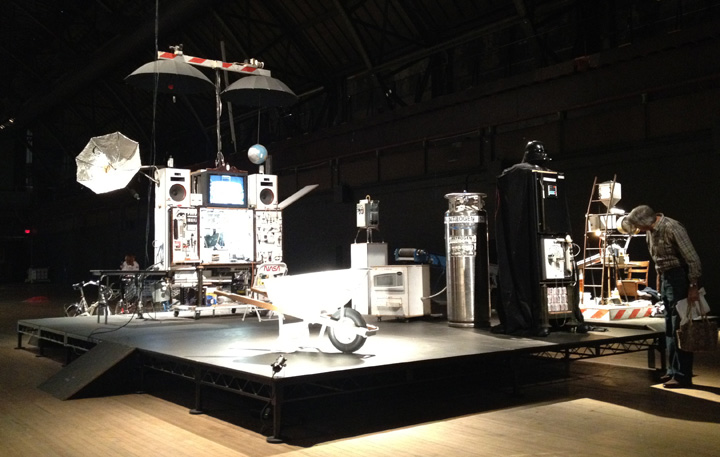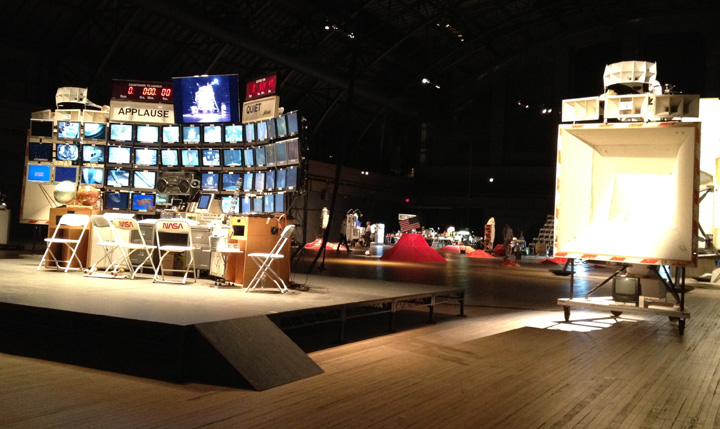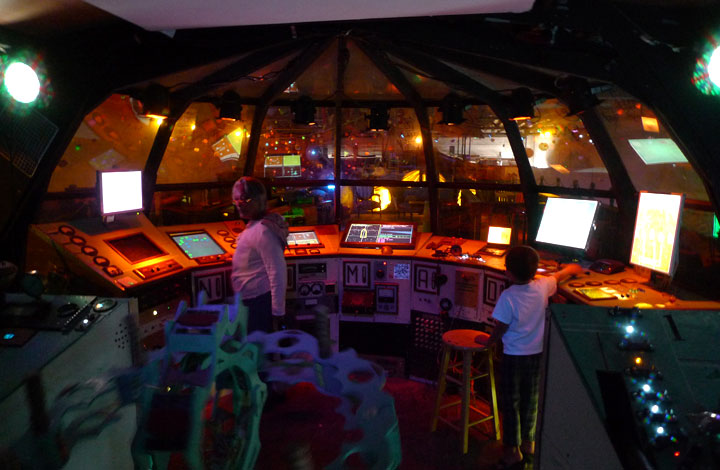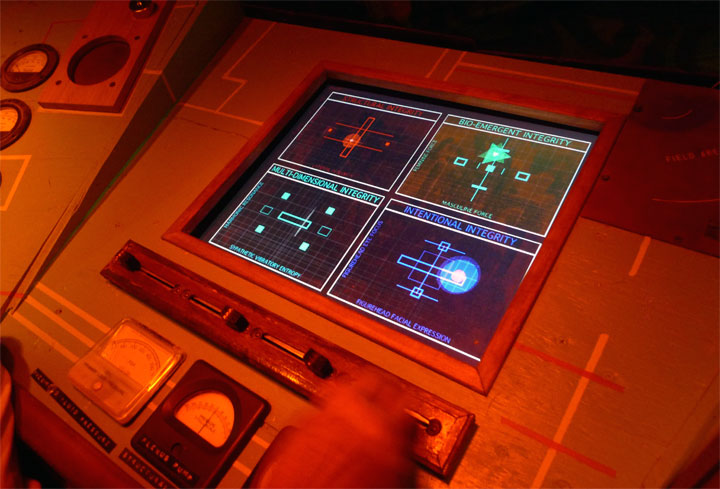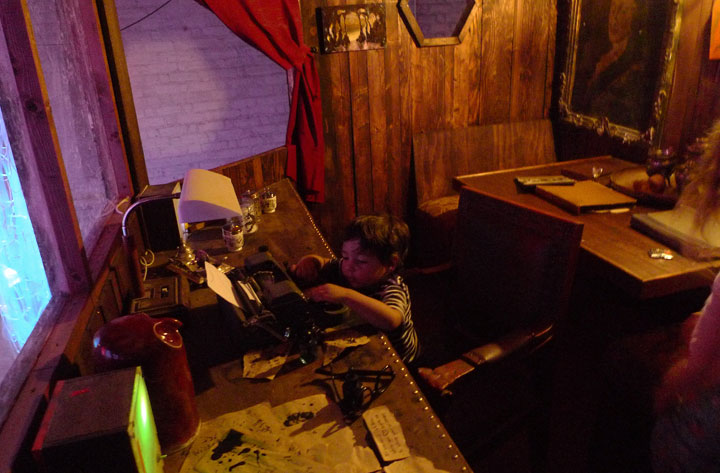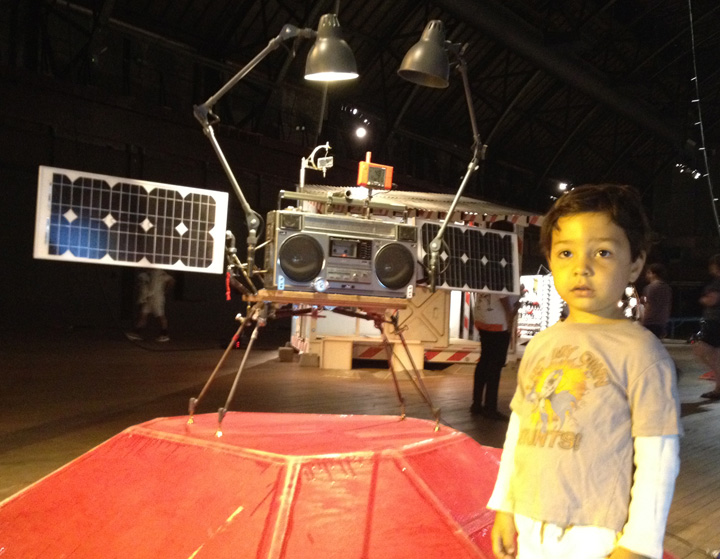Archive for the ‘Creative Time’ tag
“Drifting in Daylight” at Harlem Meer
After getting lost in beautifully tucked away trails toward the north west corner of Central Park, the discovery of the S.S. Hangover made for successful end of art hunting in Central Park this past Saturday. The only one disappointed in our group of six art viewers was the 5 year old who had envisioned riding the boat along the lake as the music played. Fortunately the soft pleasant music performed from the boat by the brass sextet calmed our disillusioned interactive art connoisseur.
Upon studying the ship, my 6 year old immediately asked why there was a fat unicorn on the sail. A Creative Time attendant, corrected him that it was not a unicorn, but the winged horse, Pegasus from the myth of Hercules. To everyone’s disappointment, she went on to explain that the fat Pegasus represents the struggling artist who has gotten older and is unable to achieve artistic recognition and glory. I immediately wondered why the artist had to take a nice performative piece and stamp it with such a trite concept.
The boat appeared to circle around a small island as it performed a piece by Kjartan Sveinsson. We only remained for iterations that were relaxing and pleasant. As we continued to walk around the Harlem Meer, we encountered Karyn Olivier’s “Here and Now/Glacier, Shard, Rock” – a lenticular signboard that shifts between photographs of the immediate environment behind the billboard, a glacier and pottery shard that resembled a Western classical pottery work.
Upon exiting Harlem Meer and Central Park on the east side, we encountered Spencer Finch’s “Sunset (Central Park)” – a soft-serve ice cream truck that employs solar panels to cool and power the soft-swerve. The line for the free ice-cream was far too long for us to experience the solar-cooled ice cream.
Overall the work that we encountered was poetic and relaxing at a time when so much of the immediate social issues carry friction, stress and the growing schism between the rich and poor on our earth.
Tom Sachs, MARS: Cool but Lame
I had been so excited to see Tom Sachs’s “Space Program: MARS”, unfortunately it turned out to be a disappointment and a sharp reminder of how lame work that is executed to target the Art Market can be. I also made the mistake of taking my nearly four year old son, the kid was bored and I should have known better.
I’m a big fan of Tom Sachs’s work, his amazing craft at assembling functioning sculptures out of materials never meant to be used in the forms that he does or as he calls it bricolage. I’m also well aware that the end product of his work is the art object and what interactivity is available in the work is meant exclusively for the artist and a few friends. However from MARS I hoped for something different, more spectacular and more available to a general public. Ahead of the visit, I checked to see if the exhibition was kid friendly, according to the Armory site it was, so this fed my image of an immersive and interactive installation.
Upon entering the space, I was not entirely surprised to find that the Armory overwhelms the work. The installation feels like museums pieces staged on platforms in a gigantic armory. I think that each element would have been amazing in a museum or gallery where the environment itself is at a much smaller scale. But in the armory, the pieces look like scattered work that do not come together as a whole. The installation is not interactive, in fact twice I was told to get off a platform when trying to get a closer look at the work (second photo below) and later told to take a notepad off a stool, because the stool was part of the art… And then there was the annoyance of Sachs’s assistants skating or bicycling around the armory and climbing into the sculptures which just made it all feel like a playground for the artist and his friends.
Part of the reason that I’m writing this is that visiting the Tom Sachs MARS show brought into focus the effect of work created for a market driven audience and the limitations of a space like the Armory on Park where Art is meant to be seen and not touched. Tom Sachs’s sculptures themselves reminded me of an exhibition that I saw last summer in the Santa Fe’s Center for Contemporary Art. The exhibition titled The Due Return by a collective that goes by Meow Wolf, was entirely immersive, other worldly, engaging and fun. It didn’t carry any of the pretentions of the art world, it was a magnificent and sincere installation that still felt like fine art. The Due Return presents a giant ship that sails through space and welcomed anyone of any age to traverse its various levels and rooms and discover countless interactive elements. I can’t imaging coming across an installation like The Due Return at an art establishment in New York City and it’s disappointing. Below is an image from a post featuring The Due Return.
My son could not get enough of The Due Return and we visited multiple times during a residency in Santa Fe. Whereas he was bored at Tom Sachs Space Program: MARS… I certainly understand that MARS was not designed to entertain young kids, but it should not be promoted as “an immersive space odyssey”… immersive for whom?
In speaking with one of the store attendants (the exhibition has a store that features products in collaboration with Nike), the attendant told me that although the installation itself isn’t that exciting, the performances appeared to be something special. I did not attend any of the performances, however my recommendation is if you are going to see the show before it ends this week, do it on an evening of a performance, don’t go just for the exhibition.
Creative Time Summit
If there is a revolution in public practice happening today it is not in a conference at a private art college. Revolutions in practice can not be captured and summarized at a conference. The very notion of Creative Time Summit conference runs against “revolution,” “public,” or “practice” and mutes anything powerful or inspring about these terms, simply because it is curated and caters to a particular audience. In many ways it is a closed session. And the term “Revolutions in Public Practice” reads as hyperbole in the context of an art elite conference.
I was at a round table discussion at Conflux today and afterwards headed to a Lower East Side Bar to meet a bunch of friends who had been at the Creative Time Summit. Once there, I asked people how the Summit had been and it was the usual conference response… what’s the point? why are we here? it was the usual conference scenario… The usual reactionary responses to a conference. And my response to people is do not be duped by the catch terms “revolutions,” “public,” and “practice” as well as “summit” and “creative time.” This is my problem with such a title, it is not revolutionary or public, so please don’t misuse these terms; these terms have already lost so much meaning or power. Most of the people I spoke with didn’t go the second day, rather they tuned in and out from home.
Creative Time Summit is however an exceptional moment to network and hear a summary of evocative creative ideas and briefly exchange perspectives with like-minded individuals.
Sadly people buy into “The Creative Time Summit” as if it is a revolutionary agent, but it’s just another conference, put on by another institution that is far removed from anything revolutionary – whatever meaning that term can carry in relation to contemporary art that is safely nested in Western networks of capital.
Robert King Wilkerson and Rigo 23 at the New Museum

A Portuguese voice, a Louisianan voice and a Brit voice
This afternoon I attended a free discussion at the New Museum that was part of Creative Time’s “Hey Hey Glossolalia: Exhibiting the Voice,” a series of free events throughout the month of May. The discussion was between Robert King Wilkerson, former Black Panther who spent 29 years in solitary confinement in the Louisiana State Prison aka Angola Prison, artist and activist Rigo 23 and Creative Time curator Mark Beasley. (Rigo 23 and Wilkerson have been working together for the past 7 years, apparently Rigo 23 is working on a documentary about Wilkerson.)
Robert King Wilkerson is the only member of the Angola 3 that has been liberated from prison. The other two Panther inmates, Albert Woodfox and Herman Wallace remain in solitary confinement, now 34 years, the longest that any human being has spent in closed-cell restriction that is 23 hours alone in a 6-foot-by-9-foot concrete box year after year after year.
The witness of a prison slaying that sent Wilkerson to a life-time jail sentence recanted his story which eventually lead to Wilkerson’s freedom as long as he wouldn’t sue for wrongful conviction. Now Wilkerson travels and speaks and people listen in amazement to a victim of a system that kept him in solitary confinement for 29 years and a total of 31 years in jail. If one stops to consider the psychological implications of spending half a lifetime alone in a small cell 23 hours of each day, it’s difficult to imagine how sanity may be retained.
Robert King Wilkerson is not only lucid, he’s a powerful speaker who triggers the imagination and hope. When asked how he kept his sanity, Wilkerson states that it was his innocence, that although he was in prison, he wasn’t going to allow prison get in him, his love to think, to dream, dream as a form of talking to himself. He also had lots of nightmares, but the dreams out-shined the nightmares.
In closed-cell restriction (ccr), prisoners are not allowed to speak, so talking to oneself in the cell and out loud to other prisoners during the one hour time out of the cell became a method of contestation and protest. “We weren’t going to let anyone from keep us from talking, no matter how many times they’d write us up. We’d tell them to write us up…” In talking about the power of voice, Wilkerson quotes his fellow Panther inmate Herman Wallace – “The deeper they bury me, the louder my voice becomes.”
When asked about the purpose of art and activism, Wilkerson states “thay you can use your hand, you can use your talent… to tell a story, a work of art can encompass a great deal.” His point being that art may be a very powerful means for change in our society. However when Rigo 23 was asked about his practice as an artist and activist, he stated that it’s “hard to not be overcome with a sense of futility, get overwhelmed with distractions and that he has left art to try to get something undone and from Robert to learn how to deal.” Rigo 23’s “One Tree” mural in San Francisco that points to a single tree next to the highway South of Market is amongst one of my favorite public works, so hopefully he’ll return to art in some way. Although when the curator who moderated the panel isn’t familiar with Act Up’s long time, powerful logo – the pink triangle over the phrase “Silence = Death”, one can’t help but question the point of activism in today’s Art World.
Documentary filmmaker, Jimmy O’Halligan is working on a film about the Angola 3; preview is available on youtube.
